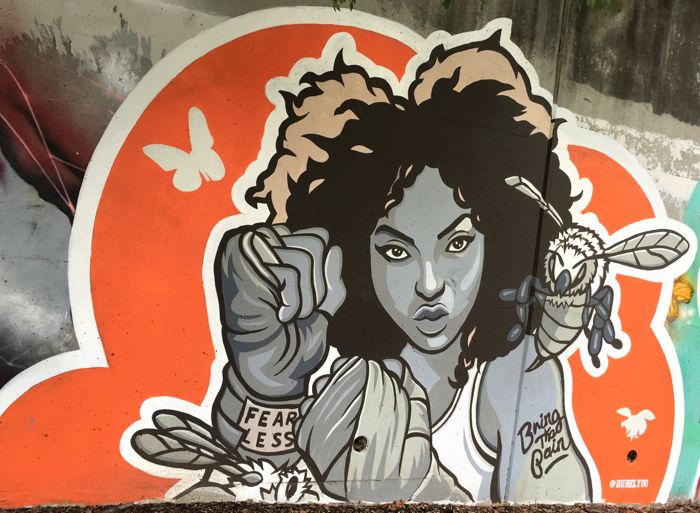Art pulls a community together…Art makes you feel differently. That’s what artists are doing all the time, shifting and changing the way you see life – Lister Sinclair

Atlanta’s street art scene is a burgeoning melting pot. With enough effort, you can find street art in almost every corner of Atlanta that encompasses all cultures; from Chinese calligraphy to thought-provoking graffiti, clever and creative messages can be constantly found in the streets of downtown, midtown, Inman Park or Little Five Points. In fact, some call Atlanta’s evolving avant-garde art community a “visual art renaissance” (thegrio.com). Undoubtedly, however, it is the ordinary passerbys and citizens that benefit the most from these public (and free!) artworks that allow for anyone to find beauty in even the most ordinary things.

Personally, I believe street art to be one of the purest and most thoughtful forms of artistic expression that exists. It allows people to find deeper meaning in a mural on the wall of their city or to smile when they are taking a walk around Beltline of Atlanta. In the fast-paced, concrete jungle society that we live in, there is tremendous hope and possibility in people slowing down to observe their surroundings with open eyes (and open minds), stopping to observe the work laid out in front of them, and realizing that it’s for them.
There are, of course, many that consider street art to be a form of vandalism. In fact, graffiti and street art are generally described as “any form of unsanctioned art that occurs in a public or privately owned space” (Wikipedia). With this, I wonder how certain people consider street art to be a form of ‘illegal vandalism’. Why can’t it be a form of reclaiming public space for ‘unsanctioned’ art that originally belongs to the people and that continues to exemplify a form of political resistance, before it is considered illegal? And how does one draw the line between a public installation of art and vandalism? Of course, we cannot expect everyone to feel the same way and obviously, there are residents who live in these areas that may feel as if their personal space has been violated. But this has always been a point of interest (and resolution) for artists; negotiating the space between creating an artwork that is can be readily integrated with the community and at the same time, can challenge its viewers to take something from the art itself.


On the walls and storefronts, there are a lot of gallery-worth works that have been commissioned by Living Walls, which since 2010 have sought to promote, educate and change perspective about public space in Atlanta communities via street art (livingwallsatl). Elevate Atlanta initiatives and Art on the Beltline have also added some spectacular pieces to our city’s streets (CurbedAtlanta).


To experience the climate of the art scene in Atlanta first-handedly, I’ve decided to take a walk on Atlanta’s very own Beltline. The Atlanta Beltline is a 22-mile long network of public parks, trails and transit circling downtown and connecting some of the city’s most popular neighborhoods such as Ponce City Market, Piedmont Park and etc. (AtlantaBeltline). It is home to many conceptual sculptures and murals and every year, Art On The Atlanta Beltline public art initiative selects new and returning artists to showcase dynamic installations and performances (AtlantaBeltline).
Here are some photos that were taken from my trip around Beltline (please excuse my lack of skills in photography).





Author: Youjean (Ivey) Hwang
(1): thegrio.com
(2): livingwallsatl.com
(3): curbedatlanta.com
(4): AtlantaBeltline